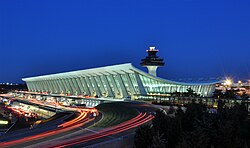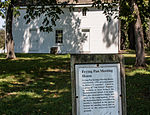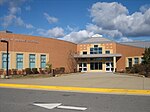American Airlines Flight 444
1979 in Illinois1979 in Washington, D.C.Accidents and incidents involving the Boeing 727Airliner accidents and incidents in IllinoisAirliner accidents and incidents in Washington, D.C. ... and 11 more
Airliner bombings in the United StatesAmerican Airlines accidents and incidentsAviation accidents and incidents in the United States in 1979Crimes in IllinoisCrimes in Washington, D.C.Failed airliner bombingsFailed terrorist attempts in the United StatesNovember 1979 events in the United StatesTerrorist incidents in North America in 1979Terrorist incidents in the United States in the 1970sUnabomber targets

American Airlines Flight 444 was a scheduled American Airlines flight from Chicago to Washington, D.C.'s National Airport. On November 15, 1979, the Boeing 727 serving the flight was attacked by "the Unabomber", Ted Kaczynski, who sent the bomb in the mail and set it to detonate at a certain altitude. The bomb partially denotated in the cargo hold and caused "a sucking explosion and a loss of pressure," which was then followed by large quantities of smoke filling the passenger cabin, forcing the pilots to make an emergency landing at Dulles International Airport. Twelve passengers had to be treated afterward for smoke inhalation.
Excerpt from the Wikipedia article American Airlines Flight 444 (License: CC BY-SA 3.0, Authors, Images).American Airlines Flight 444
Saarinen Circle - Departures,
Geographical coordinates (GPS) Address Nearby Places Show on map
Geographical coordinates (GPS)
| Latitude | Longitude |
|---|---|
| N 38.953 ° | E -77.45 ° |
Address
Washington-Dulles International Airport, Main Terminal
Saarinen Circle - Departures 1
20166
Virginia, United States
Open on Google Maps







